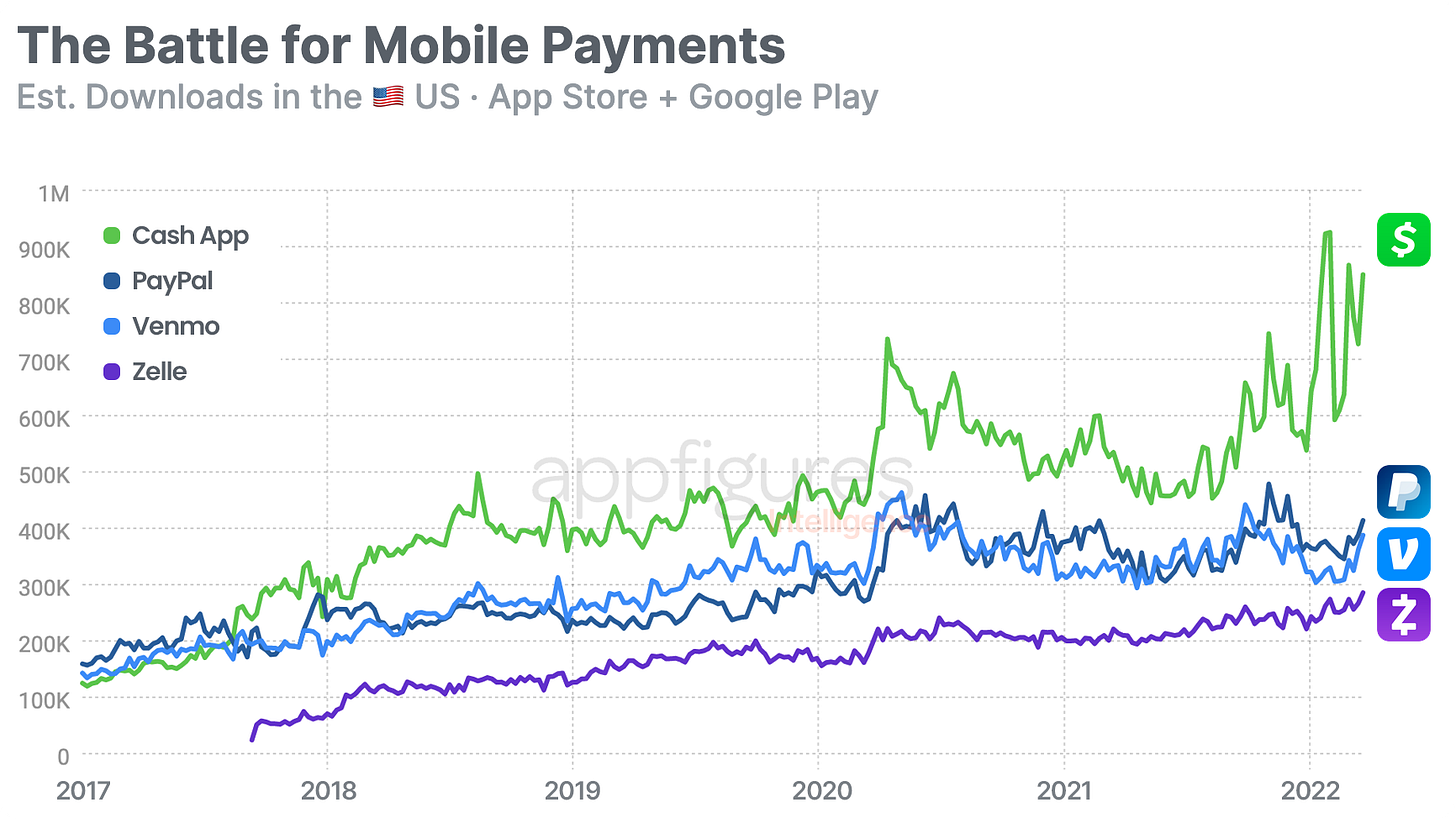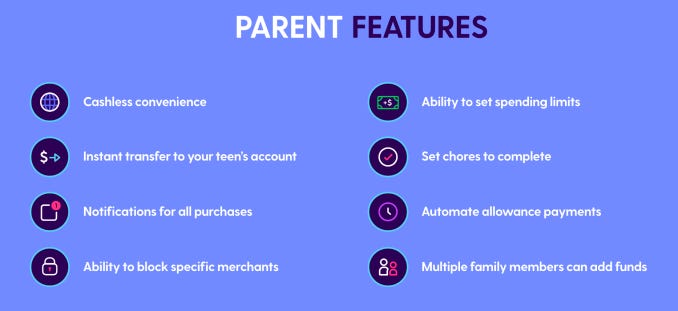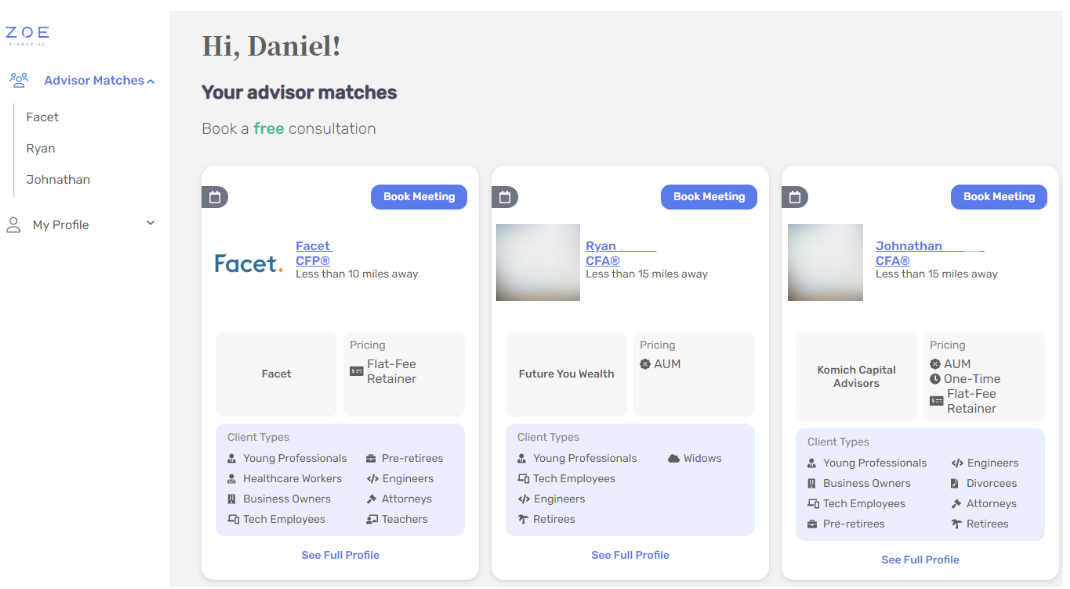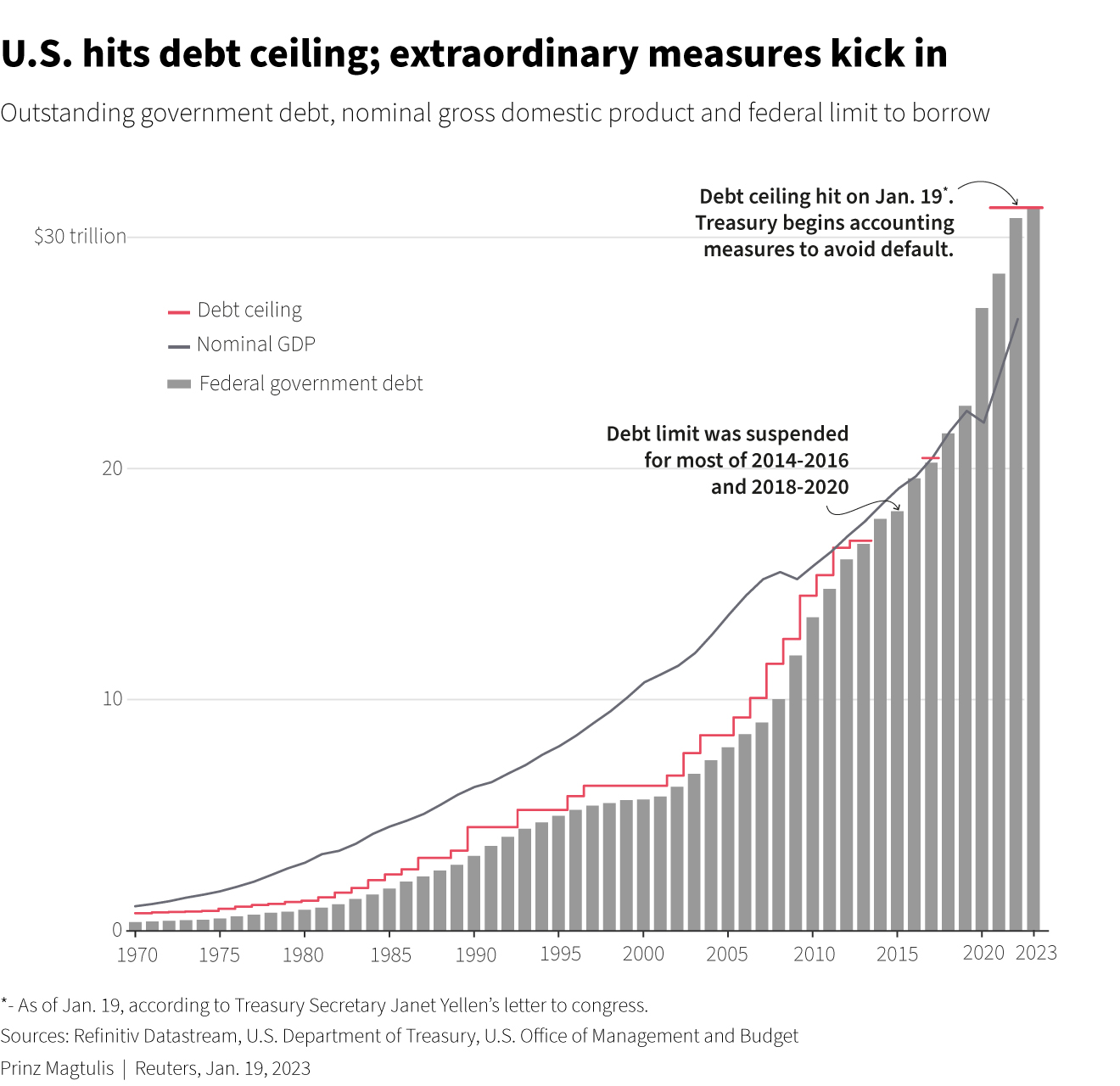Fintech: Venmo launches GenZ cash account competitor; $2B AUA marketplace Zoe Financial goes deeper on wealthtech
Also is the US government about to default?
Hi Fintech Futurists —
You’re the best, today’s agenda below.
PAYTECH: Venmo debuts Teen Accounts (link here)
DIGITAL INVESTING: $2B Wealth Management Platform Zoe Financial Partners with BridgeFT API for Data And Infrastructure (link here)
LONG TAKE: Understanding US government debt default impact on Fintech & Web3 (link here)
PODCAST CONVERSATION: The success of crypto payment processing in eCommerce, with TripleA CEO Eric Barbier (link here)
To support this writing and access our full archive of newsletters, analyses, and guides to building in the Fintech & DeFi industries, subscribe below.
Digital Investment & Banking Short Takes
PAYTECH: Venmo debuts Teen Accounts (link here)
Payments firm Venmo announced a Teen Account product, entering competition for the GenZ consumer. They join several startup creating teen-focused financial products like Step, which raised a $100m Series C in April 2021, and GoHenry, which raised a $55MM Series B in October 2022. Beginning in June 2023, Venmo will allow users to create a connected Venmo account for their kids, which comes with its own debit card.
The Venmo Teen account offers most of the classic built-for-teen features, including a separate balance, the ability to send and receive money, and direct deposits. Parents will be able to view transaction history and manage settings like PIN, locking / unlocking the card, reviewing the friends list, and blocking users. Compared to peer services, crypto payments, savings accounts, and budgeting tools are still missing.
Banking is not usually targeted at younger clients, seeing them more as a top-of-funnel acquisition strategy for assets over time, rather than individuals with particular behavioral and spending habits. Recent years have seen venture capital directed into companies that addresses this segment with targeted financial offerings. For GenZ, there is an emphasis on building money management habits, as well as distribution through influencers.
Further, Venmo is not a bank but a nonbank money transmitter under state and federal law in the US. For most people, a Venmo account feels like a traditional bank account, allowing them to perform many basic tasks — deposits, payments, and investments — through a simple interface. To get deeper share of wallet and profitability, lending and a banking license are likely necessary. However, as a mobile distribution footprint for cash accounts, Venmo can be fast and clever about reaching new audiences.
Last, this brings up the classic VC-to-startup challenge — interrupting a well-rehearsed pitch, an investor might say “is this a product or a feature?” or “what is keeping Venmo from doing this and putting you out of business?” The answer is a race against time. Can someone like Step grow fast enough targeting their niche, before the incumber copies their feature? At one point Venmo was that start-up. Or perhaps Venmo is the laggard in the context of its more popular competitor CashApp, now trying to regain cultural relevance.
👑Related Coverage👑
DIGITAL INVESTING: $2B Wealth Management Platform Zoe Financial Partners with BridgeFT API for Data And Infrastructure (link here)
Zoe Financial is a digital marketplace serving as matchmaker between high net worth individuals and financial advisors. As of 2023, it has ~$2B in assets under administration (AUA), and the 4,000 advisors using its platform represent approximately ~$800B in AUM. The company was founded in 2018 and is backed by Softbank, and appears to want to go deeper into the technology stack. Zoe is working with BridgeFT, a multi-custodial wealthtech API offering, to power its own platform for advisors.
On the marketplace, users take a survey, provide their location, and answer questions regarding financial goals. Zoe then produces a list of the top “vetted” advisors. Likely they get a referral fee for the effort. Earlier this year, Zoe Financial also launched a wealth management platform, and integration with BridgeFT will likely accelerate the software build.
Digital channels are great at lead generation, but for actual services provision, talking to a real person is still preferred — according to a report by Simon Kucher, 63% of respondents consider human interaction the best method for receiving financial advice. This has led to the proliferation of the “hybrid model”, combining digital and traditional services.
The global wealth management software market size is around $4B, making it a reasonably large prize. Among investments focused on the client-advisor experience, over 50% are being allocated to CRM and financial planning tools, highlighting the importance of having a modern digital platform. Data gathering, client onboarding, portfolio reporting, and fee billing slow things down with manual process.
Despite more than a decade of attempts to digitize these processes, investments are still pouring into the space. Multi-billion dollar companies like Envestnet and FNZ *should* be sufficient at solving the problem. But it is almost as if there are structural, or perhaps generational, barriers preventing the success of the model.
👑Related Coverage👑
Interested in Sponsorship?
To support the Fintech Blueprint and reach our 170,000+ Substack and LinkedIn audience of builders and investors, learn more below or contact us here.
Blueprint Deep Dives
Long Take: Understanding US government debt default impact on Fintech & Web3 (link here)
We look at the potential debt ceiling crisis in the United States, and connect the core ideas to fintech. First, why does this even matter?
We explore how the mechanics of government spending influence the value of the dollar, its interest rate policies, and the resulting economic environment. Further, we look at the potential outcomes from a default, and suggest the opportunity for those building in the space.
Podcast Conversation: The success of crypto payment processing in eCommerce, with TripleA CEO Eric Barbier (link here)
In this conversation, we chat with Eric Barbier, CEO of TripleA a crypto payment gateway regulated by MAS, Singapore’s Central Bank, president of PayTop a French FinTech and is also on the board of stc pay, the neobank of stc, the largest mobile network in Saudi Arabia.
Eric is the founder of TransferTo (now Thunes and DT One), the global mobile payment network interconnecting financial institutions, merchants and mobile operators in Emerging Markets. Eric founded TransferTo in Singapore in 2006. TransferTo has been acquired by Ingenico, the leading payment solutions provider.
Before TransferTo, Eric co-founded Mobile 365, the global mobile messaging hub. Mobile 365 was acquired by Sybase (now SAP) in 2006. Eric holds a Master’s Degree in Information Technology.
Curated Updates
Here are the rest of the updates hitting our radar.
Digital Investment Management and Capital Markets
⭐ New Zealand Start-Up Launches AI Powered Investment Platform
OpenFin’s Attack On The ‘toggle Tax’ In Financial Apps Secures It A $35MM Series D Round
Digital Banking and Payments
⭐ Chase UK triples customer numbers YoY (because it actually pays interest)
Shape your Future
Wondering what’s shaping the future of Fintech and DeFi? At the Fintech Blueprint, we go down the rabbit hole in the DeFi and Fintech industries to help you make better investment decisions, innovate, and compete in the industry.
Read our Disclaimer here — this newsletter does not provide investment advice and represents solely the views and opinions of FINTECH BLUEPRINT LTD.
Contributors: Lex, Laurence, Matt, Farhad, Daniel, Daniella, Michiel
Want to discuss? Stop by our Discord and reach out here with questions.
Later this week, we will share our Short Takes on the latest Web3 and Digital Investing news, reviewing several companies. If you’d like us to look at any specific item, feel free to share your thoughts in the comments below.

















